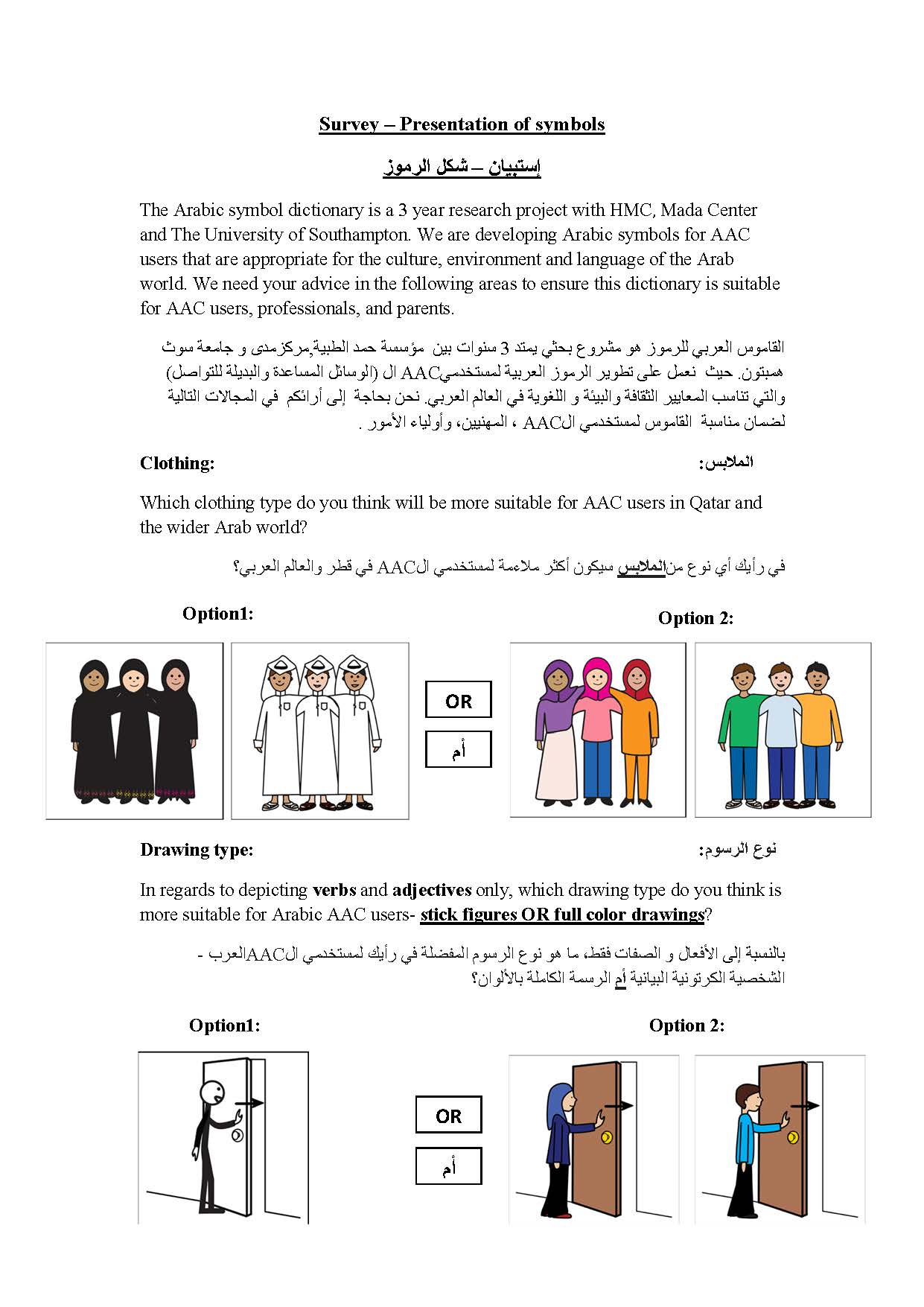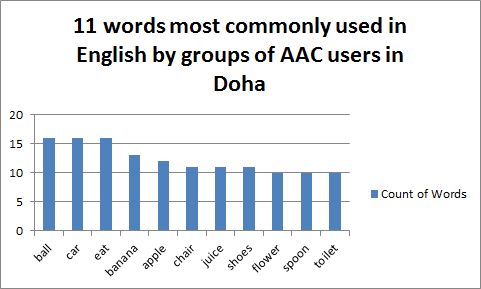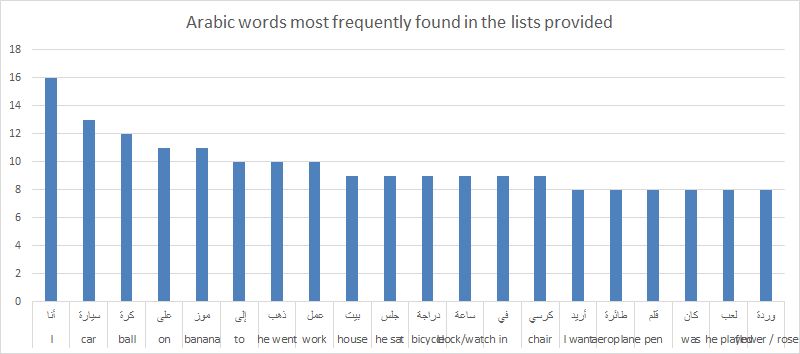Over the past month a further 20 therapists with 13 Arabic speakers voted on the first batch of symbols with Tullah reporting that there was a preference for colour versions of male and female images for verbs rather than stick figures (3 voted for stick figures and 17 for full image with colours). Tullah also felt that gender might play a role in the symbol choices, as it appeared that the male attendees were more willing to accept stick figures in black and white. This area needs more research! Does the gender of the therapist impact on the choice of symbol they may make for their AAC users?
When it came to discussing the clothing concerns there was a general consensus that there should be a range of dress with options for traditional styles as well as westerner clothing. The final dictionary will provide access to all the ARASAAC symbols as well as the specially designed ones for Arabic culture so it is hoped that there will be sufficient choice.
 Because there have been some concerns about the way action symbols for verbs are portrayed and the type of clothing needed across all the symbols it was decided that we needed to increase the number of people involved in making these decisions so a survey is being sent out across several organisations with AAC users in the hope that we receive clear direction.
Because there have been some concerns about the way action symbols for verbs are portrayed and the type of clothing needed across all the symbols it was decided that we needed to increase the number of people involved in making these decisions so a survey is being sent out across several organisations with AAC users in the hope that we receive clear direction.
The results from this survey and the final votes for Batch 1 of the newly designed symbols will be discussed in the next blog. In the meantime a new collection of Arabic words lists have been gathered from the Awsaj Academy teachers, parents and speech therapists working with AAC users.
Core Vocabulary
During the year the team have kept up the discussion about core Arabic vocabularies. According to the PrAActical Blog (author Carole Zangari) the recent ATIA 2015 conference
“served as validation that core vocabulary is now a widely accepted practice in supporting language development with AAC learners. Presentation after presentation discussed the rationale, research support, and strategies for implementation.”
Early on it was the aim to have a localised core vocabulary used by AAC users in Doha with a set of words that were based around a symbol vocabulary collected from therapists, teachers and parents in specialist schools and clinics. The original list was largely based on an English core vocabulary taken from the 100 frequently used core words provided by Prentke Romich Company (PRC), with a considerable number of fringe words – mainly nouns as can be seen from the most frequently used ones.
Now an Arabic word list has been developed, built up thanks to collaboration with 8 Doha based institutions. Description of data origins for Core vocab. The AAC user lists contain around 1000 words and the initial analysis has shown an interesting set of frequently used Arabic words which still need more accurate analysis and checks against other lists. The top 20 translated into English (with frequency in brackets) are at the moment:
I (16), car (13), ball (12), on (11), banana (11), to (10), he went (10), work (10), house (9), he sat (9), bicycle (9). clock/watch (9), in (9), chair (9), I want (8), aeroplane (8), pen (8), was (8), he played (8), flower / rose (8)

Signing young in Arabic (taken from ‘ndictative dictionary’ provided by The Qatar Society for Rehabilitation of Special Needs)
We also have access to a list of words collected by the Qatar Society for Rehabilitation of Special Needs for those who are deaf or have hearing impairments and are using sign language in Qatar and we are beginning to collect words used when teaching Arabic to children and those wishing to speak Arabic as a second language.
It is felt that these three collections should be representative of the types of vocabulary needed as a basis for the dictionary. The intention is to analyse the collections looking for similarities in the words used between the lists, frequency of use and comparisons with the English core vocabularies used at the start of the project.
References
Zangari, C. (2012).Helping the general education team support students who use AAC. Perspectives on Augmentative and Alternative Communication, 21:82;91. (Accessed 22nd February, 2015 http://www.minspeak.com/students/documents/%20Zangari.pdf)
VanTatenhove, Gail M. (2013) Core Vocabulary with Emergent & Context-Dependent Communicators in Special Education Classrooms (Accessed 22nd February, 2015 http://www.vantatenhove.com/files/handouts/CoreVocabWithECDCommunicators.pdf )
VanTatenhove, Gail M. (2007 Normal Language Development, Generative Language & AAC (Accessed 22nd February, 2015 http://www.vantatenhove.com/files/papers/LangDevelopmentIntervention/NormalLanguage&AAC.pdf )


